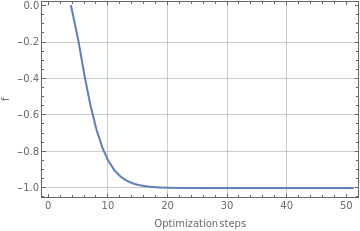Wolfram Language Paclet Repository
Community-contributed installable additions to the Wolfram Language
FubiniStudyMetricTensor[QuantumState[...] ,opts] | calculates the Fubini–Study metric tensor as defined by the VQE approach from a QuantumState with defined parameters |
QuantumState |
|
|
1 | 0 |
0 | 2 Sin[2θ1] |
"Matrix" | obtain the correspondant Fubini-Study metric tensor matrix in as a list. |
"MatrixForm" | obtain the correspondant Fubini-Study metric tensor matrix in MatrixForm. |
"Parameters" | obtain parameters used for the differentiation process. |
"SparseArray" | obtain the correspondant Fubini-Study metric tensor matrix as a SparseArray. |
1 | 0 |
0 | 2 Sin[2θ1] |
|
|
1 | 0 |
0 | 2 Sin[2θ1] |
|
QuantumNaturalGradientDescent[f,metric ,opts] | calculates the gradient descent of f using the defined metric tensor for the parameters space. |
QuantumState |
|
